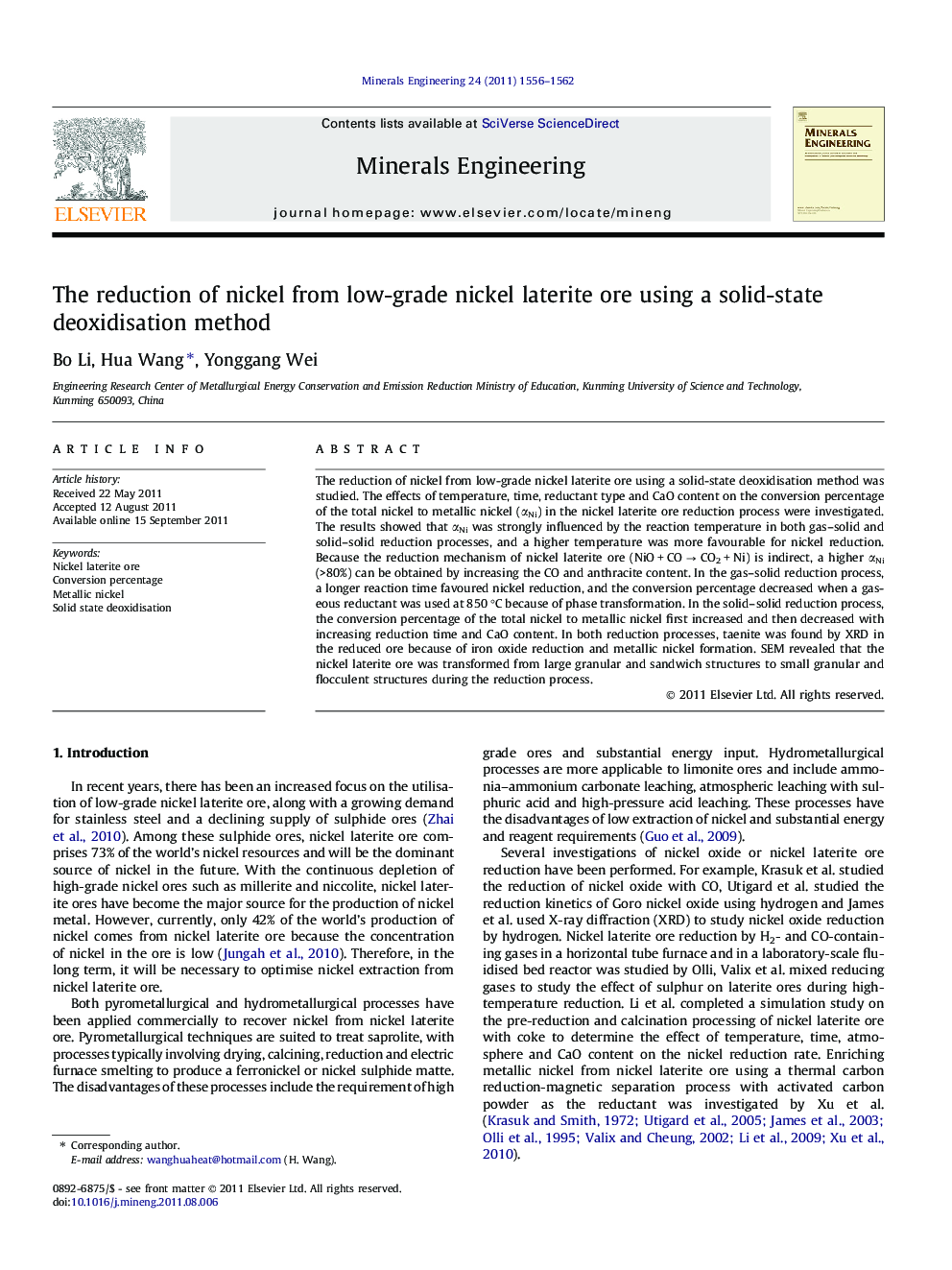| Article ID | Journal | Published Year | Pages | File Type |
|---|---|---|---|---|
| 233723 | Minerals Engineering | 2011 | 7 Pages |
The reduction of nickel from low-grade nickel laterite ore using a solid-state deoxidisation method was studied. The effects of temperature, time, reductant type and CaO content on the conversion percentage of the total nickel to metallic nickel (αNi) in the nickel laterite ore reduction process were investigated. The results showed that αNi was strongly influenced by the reaction temperature in both gas–solid and solid–solid reduction processes, and a higher temperature was more favourable for nickel reduction. Because the reduction mechanism of nickel laterite ore (NiO + CO → CO2 + Ni) is indirect, a higher αNi (>80%) can be obtained by increasing the CO and anthracite content. In the gas–solid reduction process, a longer reaction time favoured nickel reduction, and the conversion percentage decreased when a gaseous reductant was used at 850 °C because of phase transformation. In the solid–solid reduction process, the conversion percentage of the total nickel to metallic nickel first increased and then decreased with increasing reduction time and CaO content. In both reduction processes, taenite was found by XRD in the reduced ore because of iron oxide reduction and metallic nickel formation. SEM revealed that the nickel laterite ore was transformed from large granular and sandwich structures to small granular and flocculent structures during the reduction process.
Graphical abstractReduction rate of metallic nickel as a function of reduction temperature (experimental condition: CO content: 20%; reduction time: 30 min).Figure optionsDownload full-size imageDownload as PowerPoint slideHighlights► Solid state deoxidisation method for low-grade nickel laterite ore. ► The nickel reduction of low-grade nickel laterite ore at low temperatures (⩽1000 °C). ► Nickel reduction characteristics for the gaseous reductant and solid reductant.
